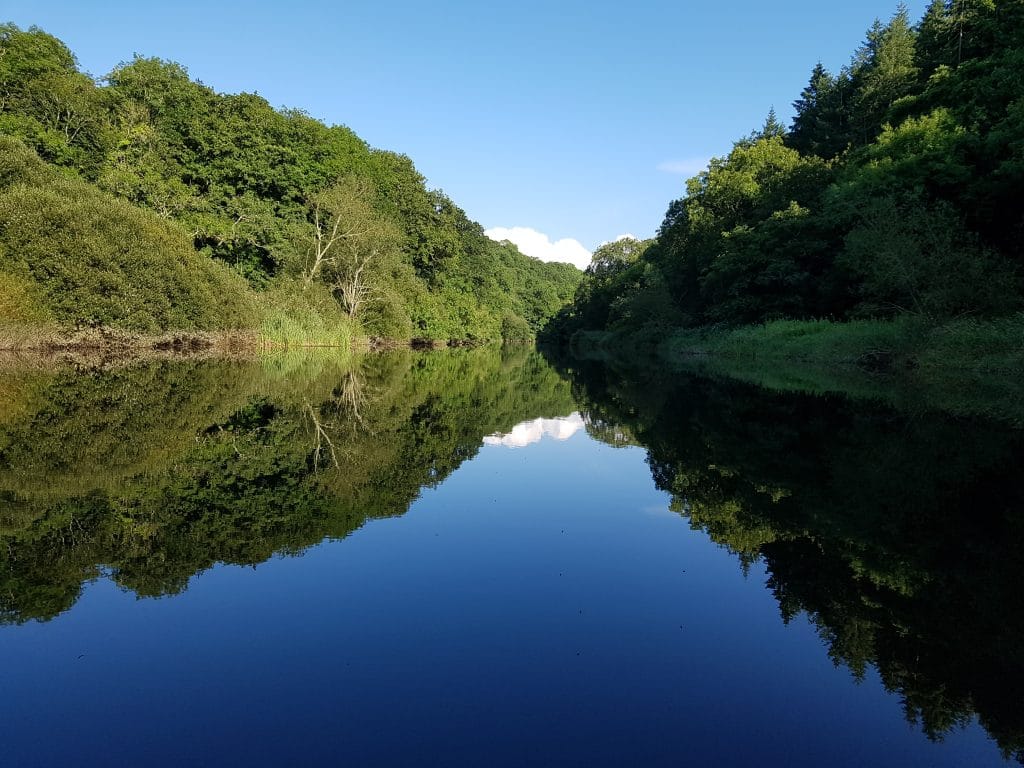Reflections on Swimming with the Alexander Technique…
“ It’s as if the river doesn’t mind one solitary human quietly joining it. With a group, it quickly becomes a human environment – we take over, make a noise, change things.”
I went for a swim in my favourite stretch of the River Teifi today, a beautiful summer day. The water isn’t cold enough to take your breath away at this time of year, but it’s cool. So it took a minute to embrace the support of the water.
The water’s soft and clear. The banks are steep and full of the greenest trees. Birds are singing loudly and leaves swirl around, caught by rays of sunlight reaching beneath the surface. I soon feel part of the river, even though I’m swimming against its flow, and I continue for about ten minutes.
To get the real benefits of swimming in open water, I don’t think you can be wearing a wetsuit and/ or monitoring time. And I think it’s best to be alone. It’s as if the river doesn’t mind one solitary human quietly joining it. With a group, it quickly becomes a human environment – we take over, make a noise, change things.
Gliding through the river in breaststroke can be like an act of submission. I’m giving myself to the water, becoming part of it. But coming out to breathe is the most interesting bit. It’s a chance to find a real connection between head and pelvis, as well as enjoying the view. As I break the surface, my arms gently support the breathing position as my hips sink and I allow my knees to come forward and my feet to drop. If I’m going to avoid snatching, gasping and pulling my legs forward, I have to think about what I want to let happen. I need to give it time. I want everything to open for the in-breath, especially my ribs and hips. When I go back in for another glide, my legs sweep springily, as a result of that slow, preparation phase. It’s Alexander Technique work in natural water.
I don’t think many people get this kind of experience. Most swimmers don’t know how to coordinate themselves in water, without compromising the integrity of head neck and back. Competing, against the water, time, or other people, isn’t conducive. And wetsuits are de-sensitizing.
It’s likely that even Roger Deakin, as he swam round Britain using breaststroke, did it mostly with a tightened neck. He understood his environment very well, clearly loved the water and didn’t claim to be a technical expert but, sadly, you can’t fully appreciate your aquatic surrondings when swimming with your head pulled back against your spine. And it’s almost certain that he would have been. Because nearly everybody does.
But it’s possible, with lots of the right kind of work, to coordinate yourself with the water without dis-coordinating yourself. And there are magic moments to be had. Moments of connection with yourself and your environment.
Before turning round I bobbed up and down vertically in the deep water, resting under the surface long enough to direct myself to expand, then emerging to hear the birds. I headed back, with the tide and a bit of easy butterfly. I stomped up to the car through the steep woods and bought some home grown strawberries from the farm where we buy our eggs. I’m going to have some now.


